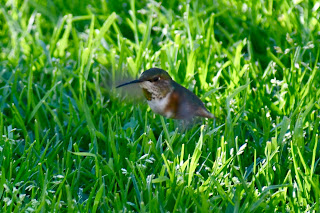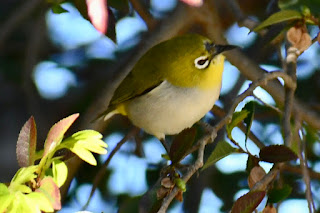Manhattan Beach, CA 2/10/2024- 2/11/2024
Last weekend I traveled with my wife and younger daughter to Southern California for ten days. My daughter planned to attend the Cali Vibes Music Festival in Long Beach. Since none of her friends were joining her, my wife and I took the trip with her. The weekend prior to us leaving I watched on our local news casts the Pineapple Express dumping what they called days of historic rain to California. The images of overflowing water ways, flooded neighborhoods and mudslides were concerning. I reached out to my cousin who lives along the coast, between Los Angeles and San Diego, to check on her welfare and to assess the chances of us making it out there. In her words, it was wet but nothing crazy. The storm system was pulling out of the area and the coming weekend forecast promised a return to typical sunny Southern California weather.
The first stop on our getaway was Manhattan Beach for two days. Saturday morning, we were greeted by plenty of sunshine. As I walked around the area of town near our hotel, there were no signs of an apocalyptic storm. Apparently, the mountain areas and their valleys and canyons suffered the worst. We were staying near the coast with no plans to travel to those areas. When I walked to the beach area of town, it was business as usual in California. The Pacific Ocean was calm. The sidewalk cafes were open, churning out lattes and whatever natural, organic, eco-friendly morning drinks are in vogue now. The beach promenade was busy with joggers, walkers, bicyclists and skateboarders. Half the beach itself was taken up by sand volleyball courts.
The first morning in town I got up early to walk around the area while the rest of the family went through their morning routine. I headed to a nearby park that I found on the local eBird hotspot list, Polliwog Park. Along the walk to the park, I came across about five black phoebes, which turned out to be a very popular sighting during my whole stay in Southern California. My route also turned up a lesser goldfinch, orange-crowned warbler and an Oregon type dark-eyed junco. I also saw and heard a few hummingbirds along the way. I could not nail down the exact species, but knew they were either Allen's or rufous hummingbirds which are very similar looking. Hummingbirds also were a popular bird during our stay out west. At the park I conservatively listed eight Allen's/rufous hummingbirds.
Left, lesser goldfinch. Right, Oregon type dark-eyed junco. © S. Weiss
Orange-crowned warbler. © S. Weiss
I spent about an hour at Polliwog Park and totaled 21 different birds. Besides the hummingbirds, the highlights at the park were western gull, more black phoebes, another Oregon junco, white-crowned sparrow, another orange-crowned warbler, Audubon's yellow-throated warbler and a summer tanager. The summer tanager actually was flagged as rare on my eBird list. I assumed it was just early for the location, but I did get a document photo of it high in the tree foliage.
Rufous/Allen's hummingbirds. © S. Weiss
A mostly all rufous colored head and back would seperate a rufous hummingbird from an Allen's. Some rufous' also sport a green cap and back, which would make them nearly impossible to identify in the field. A bird bander would be able to identify with tail feather measurements.
Left, orange-crowned warbler. Right, black phoebe. © S. Weiss
I left the park and continued my walk down towards the beach area where I met my wife and daughter. This is where we knew we were in SoCal. Kind of like the Jersey Shore in July, but this was February. Also, add in the lifeguard vehicles riding along the beach and it was just like out of the television show, Baywatch. By the way, our beaches here are still better.
I listed 12 bird species during our walk along the town beach and pier. The highlights were over 40 western grebes, a whimbrel, a Heerman's gull, some western and California gulls and a Brandt's cormorant. The cormorant, gulls and grebes would become frequent sights over the course of the next several days.
The next day, before we left town for our next stay, I went for another early walk in the neighborhood. I came across a tree on a side street that was full of activity. The tree was loaded with hummingbirds and Swinhoe's white-eyes. I listed about 10 Allen's/rufous hummingbirds, but there easily could have been double or triple that flying in and out of the foliage. It was the most hummingbirds I've ever seen in one location at one time. The white-eyes were a new life species for me. They are small warbler-like birds with bold, white eye rings. They are very vocal, but extremely hard to get a clean photograph of, as they moved about high and deep in the tree foliage. They are an Asian species that are setting up shop in Southern California. In fact, the Merlin sound ID on my phone would not pick up or register their twittering calls. They are marked as provisional by eBird. This means they are an exotic species that have been breeding in the wild for several years but are not considered naturalized yet. I'm sure they will eventually become recognized as naturalized, but as of now eBird says they count.
Swinhoe's white-eye. © S. Weiss
Other birds that filled out the tree were dozens of yellow-rumped warblers, both myrtle and Audubon's types, and a few orange-crowned warblers. A local resident identified the tree for me. It was a eucalyptus tree, another popular California species.














Comments
Post a Comment